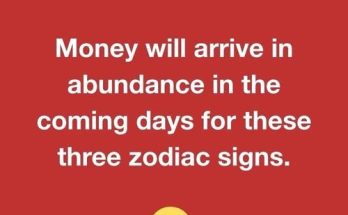The internet is buzzing with challenges these days, from riddles to quick math tricks. But one of the latest puzzles grabbing attention is a surprisingly simple-looking eye test: spotting the letter “m” in a sea of lowercase **“n”**s.
At first glance, it doesn’t look like much. Row after row of “n”s fill the page, creating what seems like an easy pattern. But hidden among them are a few sneaky “m”s, carefully disguised to test your patience, attention span, and eye for detail.
For seniors who enjoy brain games and memory exercises, this puzzle is more than just a passing internet fad. It’s a fun way to keep the mind sharp, challenge your focus, and even practice a little mindfulness.
Why Puzzles Like This Capture Our Attention
We humans love solving problems. Whether it’s a crossword, a jigsaw puzzle, or a hidden-object game, the satisfaction of “cracking the code” taps into something deep inside us. It makes us feel clever, capable, and accomplished.
For older adults, these small challenges carry extra value. Spot-the-difference puzzles aren’t just entertaining; they stimulate the brain, helping keep memory, attention, and problem-solving skills active. They also provide a refreshing break from routine — something lighthearted to do while sipping morning coffee or winding down in the evening.
And let’s not forget the social side. Sharing puzzles like this with family or friends sparks conversation and laughter. Nothing beats the moment when one person spots the answer and another says, “How on earth did you see that before me?”
The Psychology Behind the Challenge
So why is spotting a simple “m” among “n”s so difficult? The answer lies in how the brain processes patterns.
Our brains are wired to seek order. When we see a grid full of letters, our minds quickly recognize the repeating pattern — “n, n, n” — and assume it will continue. This automatic recognition helps us process information faster in daily life.
But here’s the twist: when a letter breaks the pattern, like an “m” in the middle of dozens of “n”s, our brain often skips over it. Unless we slow down and focus carefully, we simply don’t notice the difference.
This puzzle forces us to switch gears, moving from automatic pattern recognition to detailed observation. It’s a little mental workout that strengthens attention and patience.
What the Puzzle Reveals About You
Finding all the “m”s hidden in the grid isn’t just about sharp eyesight. It also reflects the way you approach challenges in life.
- If you spotted them quickly: Congratulations! You likely have strong attention to detail and a natural ability to focus deeply, even in distracting situations.
- If you struggled at first: That doesn’t mean you’ve lost your touch. It might simply show that you tend to rush or rely on first impressions. The puzzle becomes a reminder to slow down and practice mindfulness, especially when details matter.
Many seniors find this test especially enjoyable because it mirrors real-life experiences. Think about searching for your glasses on a cluttered table, or trying to spot a familiar face in a crowd. Training your brain with puzzles like this helps keep those skills sharp.
The Exact Answer
If you’ve been squinting at rows of letters and second-guessing yourself, here’s the reveal: there are 8 “m”s hidden among the “n”s.
Did you find them all before checking the answer? Whether you did or not, the true benefit comes from the effort itself. Every minute spent concentrating on the puzzle is a mini-exercise for your brain.
Why Seniors Benefit Most from Visual Brain Teasers
Cognitive experts often recommend puzzles as part of a healthy aging routine. Just like walking keeps your muscles strong, brain games strengthen mental fitness. Here’s why this kind of activity is especially valuable for older adults:
- Memory Boost: Spot-the-difference puzzles encourage the brain to hold and process details, which helps improve short-term memory.
- Focus Training: Staying with the puzzle until you find every “m” sharpens concentration.
- Stress Relief: Surprisingly, focusing on a simple challenge can calm the mind and reduce anxious thoughts.
- Confidence Building: Solving a tricky puzzle provides a small but satisfying sense of achievement.
- Social Connection: These puzzles make great conversation starters, whether in person or shared online with friends.
Tips for Tackling Visual Puzzles
If you enjoy these challenges but sometimes feel frustrated, try a few simple strategies:
- Break It Into Sections
Don’t scan the entire grid at once. Cover parts of the puzzle and search row by row. - Change Your Perspective
If you’re reading on a screen, zoom in or tilt the device. If it’s on paper, try looking from a different angle. - Use a Pointer
Run your finger or a pencil across each line slowly. This keeps your eyes from jumping ahead and missing hidden letters. - Practice Mindful Focus
Instead of rushing, treat it as a calming exercise. Take slow breaths and enjoy the process of looking closely. - Make It Social
Invite a friend or grandchild to join you. Sometimes fresh eyes spot what we overlook.
Beyond “M”s and “N”s: Other Fun Brain Challenges
If this puzzle sparked your curiosity, there are countless other visual games to explore. Seniors often enjoy:
- Hidden Object Puzzles: Finding tiny details in busy illustrations.
- Classic Spot-the-Difference Pictures: Comparing two nearly identical images to see what’s changed.
- Word Searches and Crosswords: Great for vocabulary and recall.
- Sudoku and Number Grids: Ideal for logical thinking and patience.
Each type of puzzle strengthens different parts of the brain, so mixing them up provides the best mental workout.
A Simple Game with a Lasting Message
At its heart, this puzzle is more than just counting letters. It’s a gentle reminder that life’s details are easy to miss when we rush through. By slowing down, looking carefully, and paying attention, we uncover not only the hidden “m”s, but also the hidden joys and lessons of everyday life.
So the next time you see a grid of letters online, don’t scroll past. Take a few minutes to test your eyes and mind. You might be surprised at how rewarding it feels to pause, focus, and solve the challenge.
And remember: in this case, the magic number is 8.



